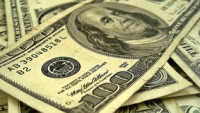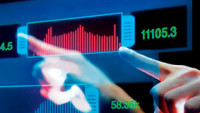 The Bank of Japan has eased policy but it hasn’t impressed markets. The BOJ will increase its ETF buying as a proportion of the total asset purchases but left its base money target unchanged.
The Bank of Japan has eased policy but it hasn’t impressed markets. The BOJ will increase its ETF buying as a proportion of the total asset purchases but left its base money target unchanged.
The Japanese yen has rallied against every major currency following the BOJ announcement, taking USD/JPY down 200 pips to 103. Further declines for another test of the key 100 level appear likely. It was a missed opportunity for the BOJ to have done more at its first meeting after Prime Minister Abe was re-elected with a new mandate to expand Abenomics.
Even the Japanese stock market, which is the single biggest beneficiary of the policy change saw shares drop, with the Nikkei choppy before falling nearly 1%. The shift into the yen, typically perceived as a haven asset will have repercussions on demand for risky assets including European stocks.
The impact of Japan’s weak monetary stimulus is being interpreted differently across Europe. The resulting dip in the euro and a perception that Mario Draghi could eventually follow Kuroda down the road of ETF purchases is supporting French and German stocks ahead of the open. UK stocks look set to open slightly lower on Friday since a smaller-than-expected easing from the Bank of Japan could take the pressure off the Bank of England to cut interest rates next week.
Mark Carney has boxed the Bank of England into a corner, with market expectations now 100% that it will cut interest rates in August, primarily because of his “more monetary easing by summer” comment. The Bank of Japan’s governor Kuroda appears to have felt compelled to act given the weight of expectation but has delivered something underwhelming. Mark Carney might be at risk of doing the same.
The sheer number of corporate earnings yesterday that saw over 60 S&P 500 companies reporting left US stock markets with some temporary paralysis. Unexpectedly strong tech earnings, including Amazon and Alphabet on Thursday and Facebook on Wednesday saw the Nasdaq Composite hit its highest this year, whilst the Dow and S&P remain just below their record peaks.
The main focus for European markets on Friday will be results from ECB stress tests. Concern the results may through up some unwelcome conclusions sent the STOXX Europe 600 Banks index off more than 2.5% on Thursday. It would certainly not be a surprise to see some of the Italian banks listed as having some of the more troublesome balance sheets. Nonetheless, this stress test, like its predecessors, will likely be more of a confidence-building exercise through the number of banks that pass than a means with which to solve the underlying issue of non-performing loans.
EURUSD – The euro has thus far failed to sustain a move below 1.10 and as such continues to drift around its 200 DMA. A break of 1.10 on the downside or 1.1150 on the topside is needed for a directional move.
GBPUSD – Sterling remains within its two-week price range of 1.31 to 1.33. There is potential for an inverse head and shoulders pattern on the daily chart with a down-sloping neckline connecting he June 29 and July 15 peaks.
EURGBP – The euro broke above 0.8425 resistance on Tuesday. The higher high follows a higher low on the daily chart and opens up further gains to 0.85, then the July 6 peak above 0.86.
USDJPY – After dropping from a confluence of resistance at 107, the dollar-yen pair has slumped down to 103, suggesting a re-test of the psychologically significant 100 level.












